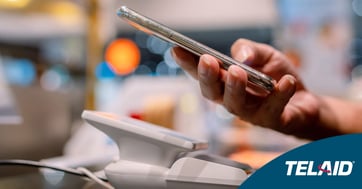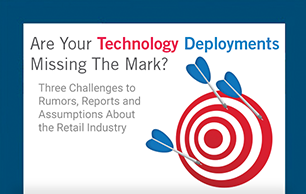 While self-checkout has grown to dominate the retail checkout experience, (55% of transactions in grocery), unfortunately, it ranks low on customer experience.1 According to a study from Raydiant, 67% of shoppers have experienced at least one self-checkout failure.2
While self-checkout has grown to dominate the retail checkout experience, (55% of transactions in grocery), unfortunately, it ranks low on customer experience.1 According to a study from Raydiant, 67% of shoppers have experienced at least one self-checkout failure.2
While self-checkout adoption is surging and delivering productivity gains, this retail technology continues to deliver challenges that are driving the transition to autonomous checkout.
What are the key challenges associated with self-checkout?
While self-checkout is not a new technology, retailers are still grappling with challenges presented with this new way of completing in-store transactions. Shrink can result from shoppers’ failure to enter accurate PLU codes or unintentional mis-scans. Losses due to theft at the self-checkout are also on the rise, as shoppers can easily scan a less expensive item instead of a more expensive item or bag product without scanning it. While designed to offer a more convenient, expedient customer experience, technology glitches, weight sensors and missing barcodes can leave shoppers frustrated.
What’s next for self-checkout?
The next wave is the transformation from self-checkout to fully autonomous checkout. Computer vision is positioned to offer faster, more accurate smart checkout in retail stores from grocery to c-stores, big box and QSRs.
Autonomous checkout leverages computer vision and AI to speed transactions and enhance accuracy. More cost effective than store-wide cameras and shelving systems associated with completely frictionless checkout in Amazon Go stores, autonomous checkout is centered on a designated checkout point, but similar to frictionless checkout, uses technology to increase the speed and accuracy of transactions.
Whether in a grocery store, convenience store or other retail environment, shoppers can simply place items from their cart into a bin at checkout and then move them to bagging. Computer vision identifies the item, enters the price and even ensures that security tags have been removed. The shopper then bags the items to complete their visit.
What are the benefits of autonomous checkout?
Autonomous checkout is resolving some of the challenges presented by its less sophisticated cousin, self-checkout.
- Reduce loss – By automating the process using AI, autonomous checkout is expected to reduce both intentional and unintentional losses, adding dollars back to the bottom line.
- Increase throughput – Greater speed and efficiency shorten queues and increase the number of transactions processed.
- Improve customer experience – Less frustration means greater customer satisfaction. Since waiting in the checkout line is a major frustration for shoppers, autonomous checkout will contribute significantly to a better customer experience.
- Optimize labor – The need for fewer cashiers will alleviate some of retailers’ labor woes and reduce payroll expense.
What are some other considerations when moving to autonomous checkout?
While the promise of value is great, robust tactical plans are a must when it comes to successful transition to autonomous checkout.
- Infrastructure - The power required to instantly process thousands of different images requires greater bandwidth and/or additional on-site computing power. Take time to think through infrastructure required to support new hardware.
- Customer experience – Customers may be hesitant to use new technologies based on previous negative experiences with self-checkout or simply lack familiarity. Be strategic about rollout of autonomous checkout, supporting the process with plenty of communication, on-site assistance and piloting.
- Capital costs – Smaller and mid-sized retailers may look at the investment required for autonomous checkout and immediately dismiss it as a possibility. While significant capital investment is required, there are many different options available. Not all autonomous checkout options match the scope of Amazon Go stores. Consider piloting a program, which can also support a stronger ROI model.
When you’re ready to deploy the latest retail technology, technology integrator, Telaid, is here to help. We work with multiple autonomous checkout providers, designing and deploying with grocers, convenience stores and big box retailers. Start your journey to automated checkout with us.
- Grocery Dive, “Self-checkout takes lead for dominant checkout format in grocery,” April 26, 2023.
- Raydiant, “State of Self-Checkout,” 2021.




